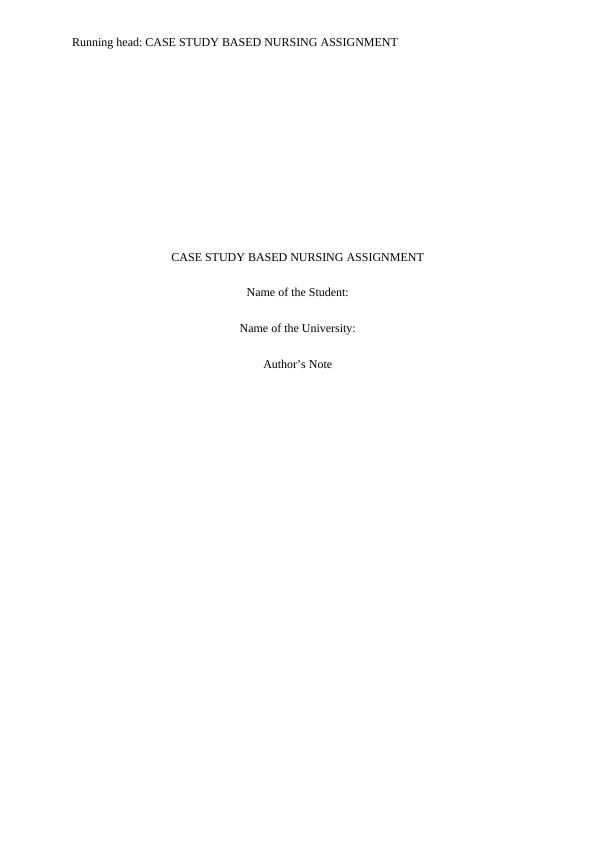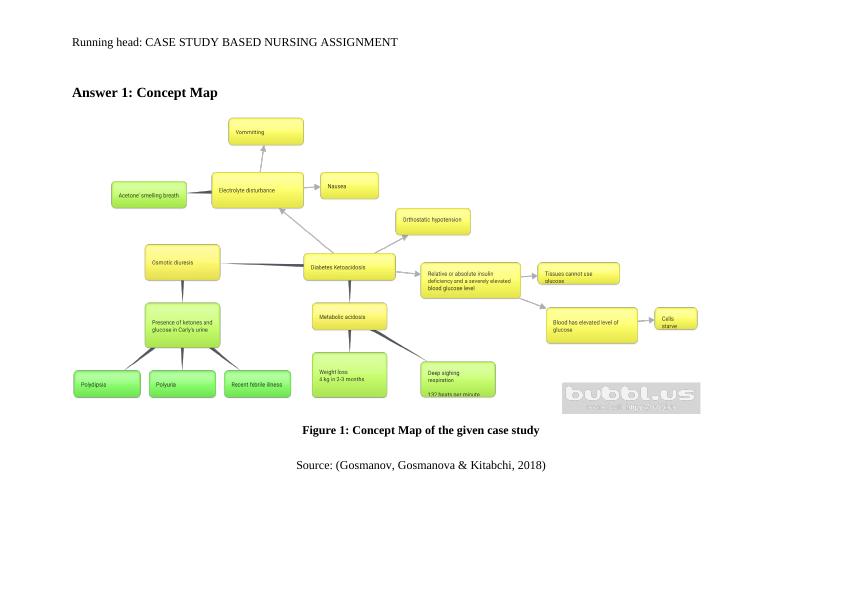Case Study Based Nursing Assignment
Create a concept map that explores the cellular pathological processes and their links to the patient's signs and symptoms in a case study.
11 Pages3185 Words12 Views
Added on 2022-08-21
Case Study Based Nursing Assignment
Create a concept map that explores the cellular pathological processes and their links to the patient's signs and symptoms in a case study.
Added on 2022-08-21
ShareRelated Documents
End of preview
Want to access all the pages? Upload your documents or become a member.
Applied Pathophysiology Assignment Report
|10
|2490
|13
Health Care - Diabetic Ketoacidosis
|7
|1587
|21
Diabetic Case Scenario: Pathophysiology, Causes, and Nursing Management
|9
|2775
|91
NURS90076 - Report on Applied Pathophysiology
|11
|2709
|310
Nursing Assignment: Diabetes Mellitus Case Study
|9
|1531
|49
Question | Insulin is a kind of hormone which is produced from pancreas inside the human body.
|7
|1495
|11




